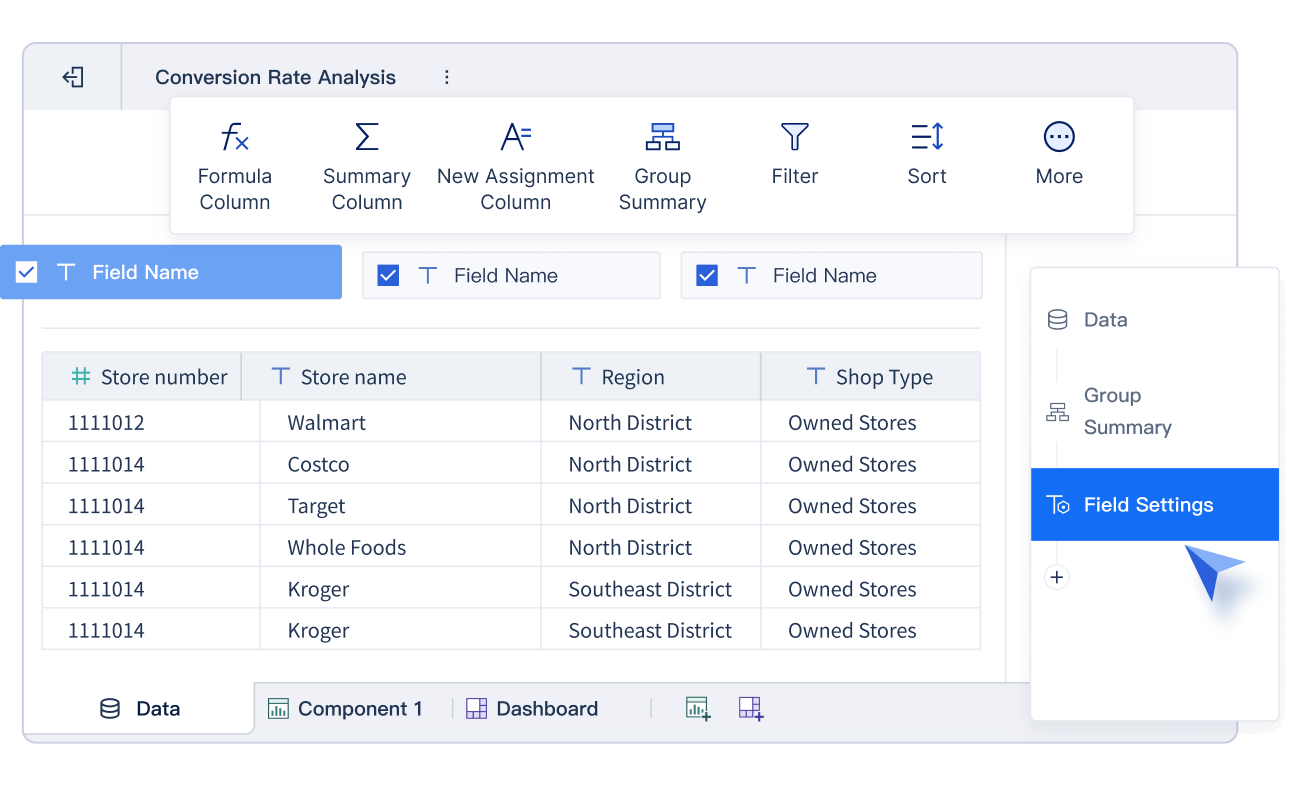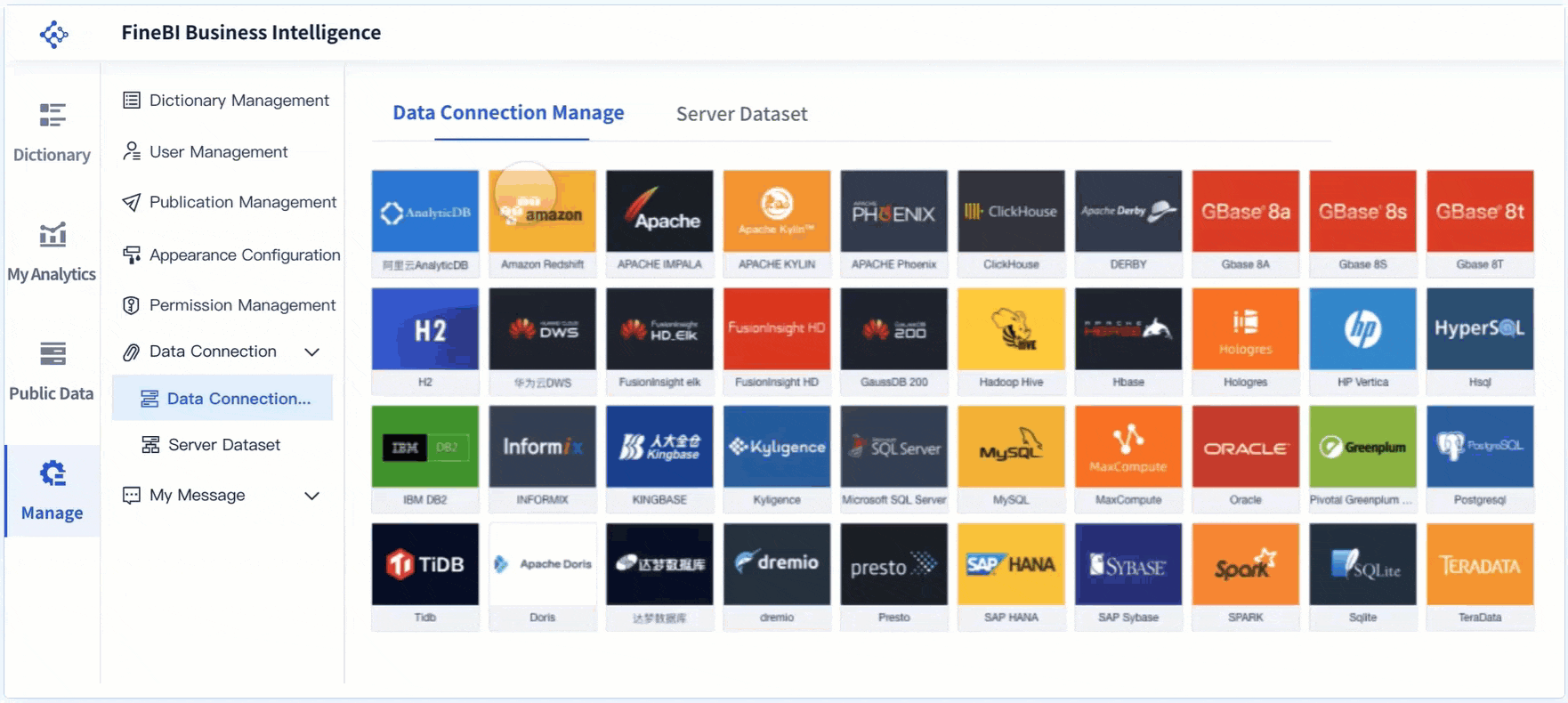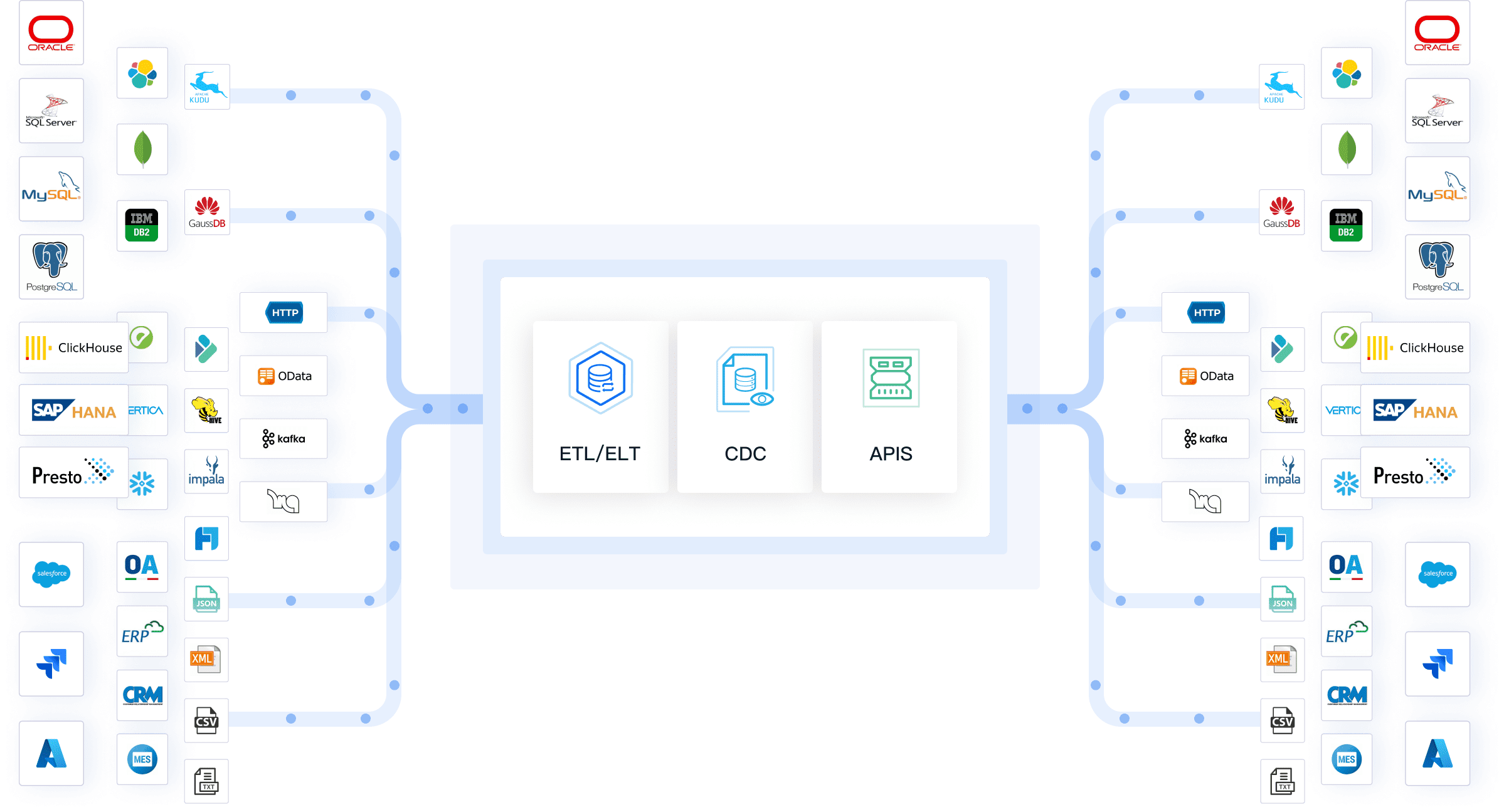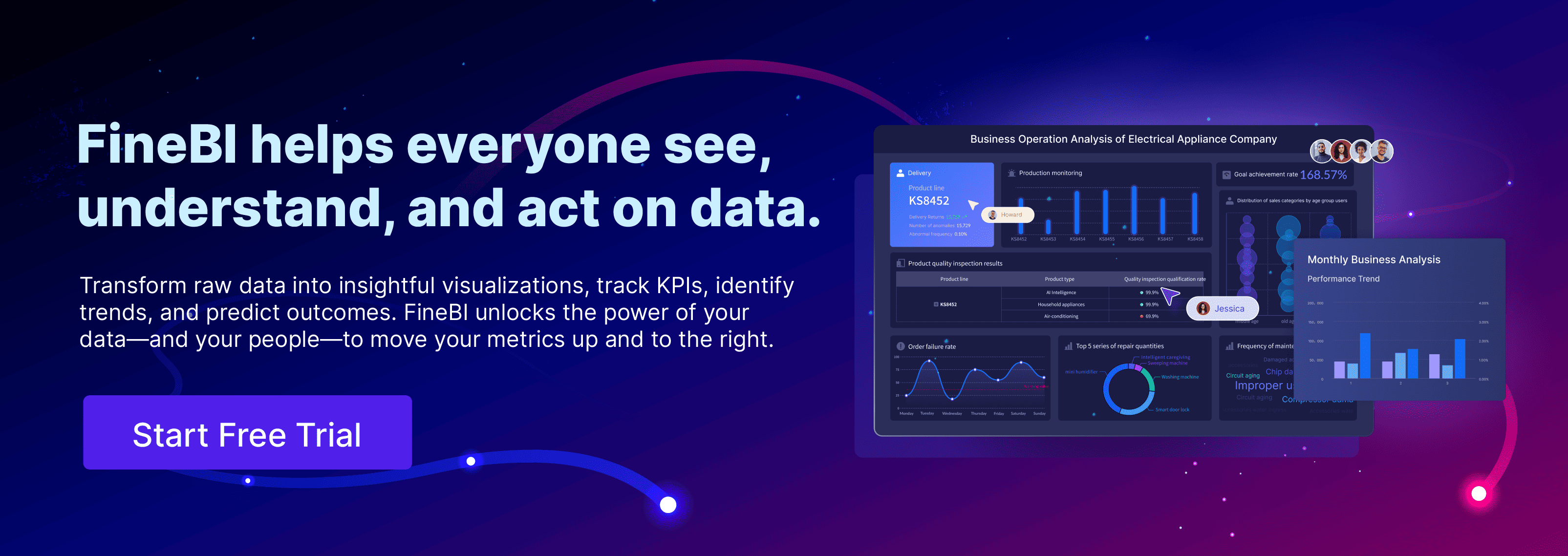

Data deployment is when you make your data, models, or analytics ready for daily business use. You use data deployment to help turn information into action. This process helps you make better choices and run things more easily.
- Groups that use data-driven decision-making are three times more likely to see big improvements in how they choose things.
Modern tools like FanRuan’s FineBI let you deploy data fast, even if your company is small or new to analytics.
What is Data Deployment?

Data Deployment Defined
You might ask, what does deployment mean in business intelligence? Data deployment is when you take your data, models, or analytics and make them ready for real business use. This means you move your work from a test stage to a live setting where people use it every day.
In business intelligence, data deployment is when you add a machine learning model or analytics solution to your daily work. This step matters because it lets your models give predictions or insights using new data. Using data deployment helps your team make better choices and react fast to changes.
Note: Data deployment is not the same as data integration or data warehousing. Data integration brings together information from different places to keep things the same. Data warehousing stores and organizes this data for analysis. Data deployment is about making your analytics or models work in real time for your business.
Here is a table to help you see the difference:
| Aspect | Data Integration | Data Warehouse Integration |
|---|---|---|
| Purpose | Unify data for consistency across systems | Populate a DWH for analytics and reporting |
| Scope | Broad: any target system or application | Narrow: specifically targets the DWH |
| Timing | Real-time or batch processing | Typically, scheduled batch processing |
| Data Storage | May or may not involve long-term storage | Always involves centralized, structured storage |
| Audience | Operations teams, IT, and business units | Analysts, executives, and strategy teams |
| Main Benefit | Operational efficiency and seamless workflows | Strategic analytics and historical insights |
| Data Types | Structured, semi-structured, unstructured | Primarily structured and optimized |
Key Elements of Data Deployment
If you wonder what deployment looks like, you should know the main steps. Each step helps you go from planning to a working solution your team can trust.
- Early Preparation and Planning
First, you get ready. You decide who will help, list any outside tools, and set up a test area. You also make clear steps for deployment and a rollback plan if something fails. - Testing Stage
Next, you test your solution in a safe place. This includes practice runs and checking that everything works right. You look for problems and make sure your data deployment will not hurt your business. - Deployment and Release
Then, you move your solution to the live setting. You plan the rollout and move parts from one place to another. You watch the deployment closely to spot problems early. - Monitoring and Issue Resolution
After you deploy, you watch how things work. You set up ways to track progress. If you find problems, you fix them fast to keep your business running well.
Tip: Always have a rollback plan. If something goes wrong, you can go back to the old version without losing data or causing trouble for users.
You can use many tools for data deployment. Some examples are cloud warehouses like Snowflake or BigQuery, ELT tools like Fivetran and dbt, orchestration tools like Airflow, and real-time tools like Apache Kafka. You might also use data integration platforms like Talend or cloud services from AWS, GCP, or Azure.
When you know what deployment is and follow these steps, you make sure your data, models, or analytics are ready to help your business.
Business Impact of Data Deployment
Decision-Making with Data
When you use data deployment, your team can make better choices. You do not have to guess what customers want. You can see real patterns in what they do. This helps you make your products and services better. Your customers will be happier, and you may sell more.
- You can find new business chances by looking at data trends.
- You can see where your business can get better and grow.
- You can change your products to fit what customers need.
You check if deployment works by seeing how your team uses data. Clear numbers help you know if your plan is good. You also check if your data matches real life, is current, and follows rules. Here is a table with some common ways to measure:
| Metric | Description |
|---|---|
| Accuracy | Shows how well your data matches real events. |
| Completeness | Checks if all needed records are present. |
| Consistency | Looks for conflicts in data from different sources. |
| Timeliness | Measures how often your data gets updated. |
| Validity | Makes sure your data follows business rules. |
Operational Efficiency
Data deployment helps your business run better. You can find and fix problems quickly. For example, you might see a slow spot and fix it before it gets worse. You can also use data to guess what you will need later, which saves money.
- A big bank saved almost 80% on costs by using the cloud and managing storage better.
- Companies that use data well can save 5 to 15% each year.
- Better data use means less waste and less manual work, so your team does more.
You check if deployment works by seeing how much time and money you save. You also look at whether your data projects help your business goals. If you keep getting better, your data deployment is working.
Data Deployment in Action
FanRuan and FineBI Solutions
FanRuan and FineBI give you a platform that makes deployment easy. You can work with lots of data. You can switch between models. You can use many kinds of databases. FineBI lets you pick real-time or batch processing. You choose what works best for your business.
Here is a table that shows how FanRuan and FineBI help with deployment in different industries:
| Feature | Description |
|---|---|
| High scalability | You pick deployment models based on your data size and needs. |
| Seamless mode switching | You choose data models for real-time or batch use, depending on how often you want updates. |
| Advanced architecture | FineBI uses Spark and HDFS, so you get fast big data analysis and quick results. |
| Support for big data | You connect to over 30 platforms, like relational, NoSQL, and multi-dimensional databases. |
| Self-service datasets | You use built-in visual ETL tools for easy data processing and field management. |
| Complex data models | You manage many fact tables and cross-source data for real-time extraction and modeling. |
You can use features for real-time analytics and dashboards. FineBI shows you the newest data right away. You can put different analytics together in one dashboard. This helps you see your business clearly.
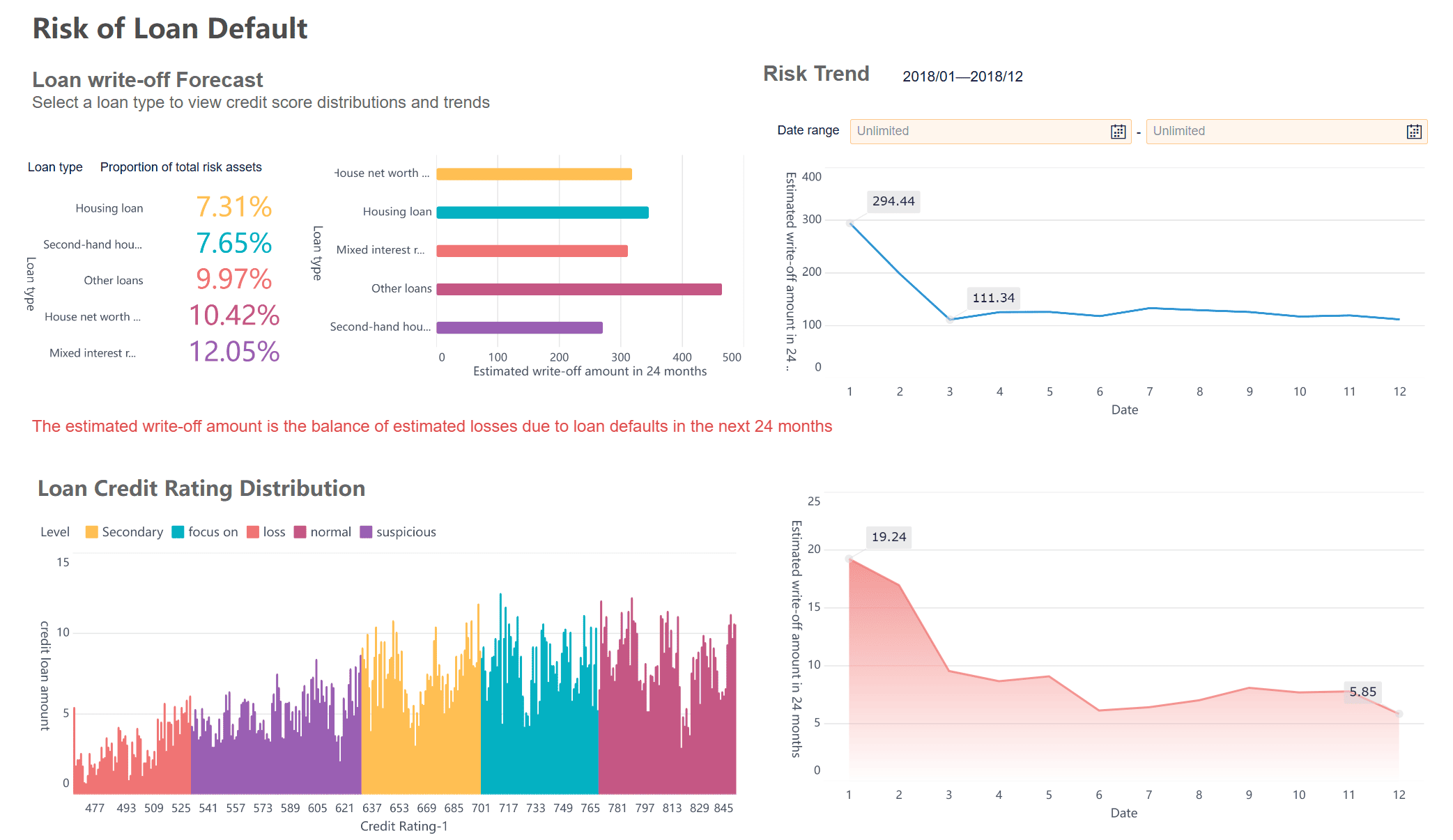
Enterprise data dashboard created by FineBI (click to engage)
- Real-time calculation and analysis help you make quick choices.
- The dashboard brings all your important data together for easy watching.
These tools help you finish deployment faster and with fewer mistakes. You do not need IT for every change. You can make your own dashboards. You can connect new data sources. You can update your analytics as your business grows.
Real-World Use Cases
You can see how deployment works in real companies. Businesses in many areas use FanRuan and FineBI to solve problems and get better results.
- One company built a system to move data easily. This saved developers lots of time.
- A US wealth management firm made data loading faster and used resources better by switching to an automated platform. Their work became much more efficient.
- A recommerce platform joined data from many places. This helped them improve marketing and understand website traffic.
You can use APIs to make your apps talk to each other automatically. This makes deployment smoother and cuts down on manual work. Data virtualization gives you one view of real-time data streams. You spend less time joining data and make fewer mistakes.
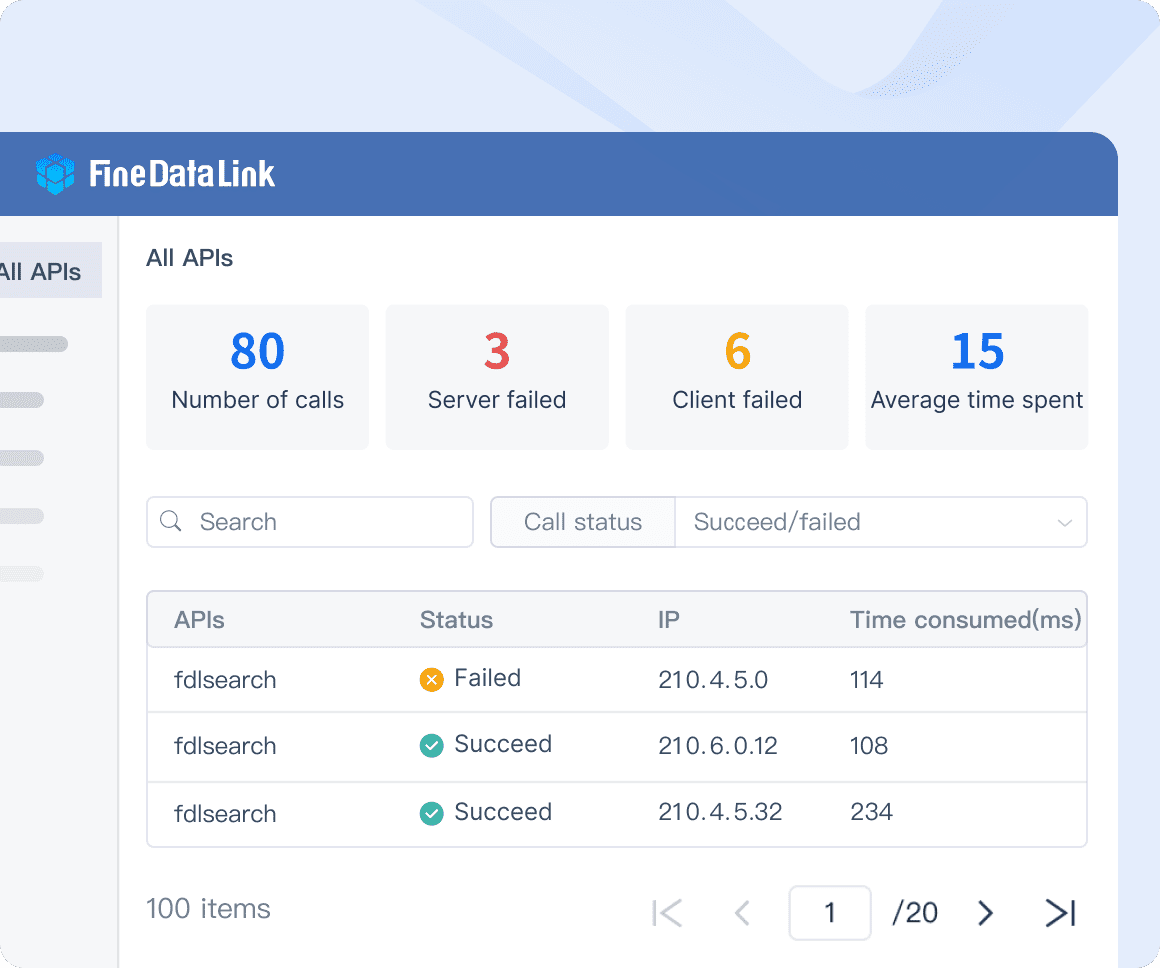
Many groups use deployment for operational intelligence. You can bring data from different jobs together and see it in your BI dashboards. This helps you find problems and fix them early. Real-time insights let you personalize customer experiences. You can react to what each customer does and give them what they need.
Some companies use deployment for fraud detection. Real-time platforms mix many kinds of data to spot fraud fast and keep your business safe. Others use nonstop data streams for artificial intelligence. This helps you guess trends and automate tasks.
When you start with FanRuan and FineBI, you follow simple steps:
- You join training to learn the platform.
- You check your needs to match the platform to your business.
- You plan with your team to set up the right way.
- You begin deployment with regular checkpoints.
- You review your setup before going live.
- You get updates and automatic data refreshes.
Clients who do this see better product success, faster launches, and fewer changes after starting. You can get these results by focusing on strong deployment and using the right tools.
Tip: FanRuan and FineBI make data deployment easy, quick, and reliable. You can handle changes, grow your business, and always have the latest insights.
Data Deployment Types and Strategies

Batch vs. Real-Time
You have choices when you plan data deployment. The two main types are batch and real-time. Each type works best for different needs. Batch processing is good for handling lots of data at once. Real-time processing lets you use data right away as it comes in.
Here is a table to help you compare these two types of deployment:
| Aspect | Batch Processing | Real-Time Processing |
|---|---|---|
| Processing Speed | Slower, handles data in large chunks | Fast, processes data continuously |
| Data Latency | Higher, with some delay | Near-instant access to new data |
| Scalability | Uses both vertical and horizontal scaling | Relies mostly on horizontal scaling |
| Resource Utilization | More efficient with resources | Needs advanced hardware, higher costs |
| Cost | Lower operational costs | Higher costs for speed and monitoring |
Think about how quickly you need results and your budget. Many companies use both types to reach their goals.
On-Premises and Cloud
You also need to pick where to run your deployment. The two main places are on-premises and cloud. Each one has good and bad points.
| Deployment Strategy | Advantages | Disadvantages |
|---|---|---|
| On-Premises | Local performance, full control, physical access, strong security options | High hardware costs, less flexibility, longer deployment times, more responsibility |
| Cloud | Scalability, pay-as-you-go pricing, easy updates, access to new features | Possible latency, unpredictable costs, less control, hybrid setups can be complex |
- On-premises gives you more control and better security. But it can be slower and cost more at the start.
- Cloud is faster and can cost less at first. But you might pay more later and have less control.
Best Practices
To make your deployment work well, follow some best practices. These steps help you avoid problems and keep your data safe.
- Always protect your data from the start.
- Store your code and data in one place.
- Use automation to make things faster and reduce mistakes.
- Have a backup plan in case something fails.
- Use a checklist to keep your process the same each time.
- Check your results after each deployment.
- Ask experts for help if you need it.
- Learn about new trends like DataOps, AI, and cloud-native tools.
Tip: If you work in a field with strict rules, your deployment must protect privacy and follow laws like GDPR.
You can use these best practices for any deployment type. A strong plan helps you get the most from your data.
Data Challenges of Data Deployment
Common Obstacles
When you deploy data, you can run into problems. Teams often keep data in different places. This makes it hard to get all the info you need. Sometimes, data is missing or not good. This can make you lose money and upset customers. If your team does not trust the data, your project might not work. Users may feel let down for a long time.
Here is a table that lists the most common problems:
| Challenge | Description |
|---|---|
| Data Silos | Different departments store data in separate systems, leading to accessibility issues and missed opportunities. |
| Poor Quality / Missing Data | Inaccurate or incomplete data can result in lost revenue, increased costs, and poor customer experience. |
| Failed Data Initiative | Lack of trust in data can lead to project failures, causing long-term disillusionment among users. |
You also face risks if you do not handle deployment well. Spending too much can hurt your budget. If your systems break, your work may stop. Weak security can let hackers steal your data. Problems with your suppliers can slow things down. Bad work after deployment can waste time and money.
| Risk Type | Implications |
|---|---|
| Budget Overruns | Increased costs and financial strain |
| Infrastructure Failures | Operational disruptions and service downtime |
| Security Vulnerabilities | Potential data breaches and compliance issues |
| Supply Chain Disruptions | Delays in operations and delivery of services |
| Inefficient Post-Deployment | Reduced effectiveness and wasted resources |
Security and Quality
You need to keep your data safe and correct. Good data helps you trust your reports and make smart choices. Data governance helps you follow the rules and laws. You should use dashboards to watch your data and keep it good. Good rules and quality help you get the most from your data.
To keep your data safe and useful, you should:
- Set up clear rules for data.
- Use tools to check your data.
- Check your data often.
- Teach workers the right way to handle data.
You can use tools to watch your data all the time. Let computers check your data for problems. Fix or remove bad data right away. A strong plan for data quality keeps your data safe and helpful. This helps your business and makes sure you follow the rules.
Tip: When you care about safety and quality, you lower risks and help people trust your data. This helps your group get better results.
Good data deployment helps your business grow and stay flexible. FanRuan and FineBI have tools to break down data silos and find value. You can use self-service analytics, automation, and AI-driven tools. These make data simple for everyone to use.
| Trend | Description |
|---|---|
| Automation | Low-code tools make data work faster. |
| Self-Service Analytics | People without tech skills can look at data. |
| AI-Driven Tools | You can ask questions in plain language to get answers. |
To get better results:
- Check your plan often.
- Make clear goals and watch your progress.
- Help your team use data every day.
FanRuan
https://www.fanruan.com/en/blogFanRuan provides powerful BI solutions across industries with FineReport for flexible reporting, FineBI for self-service analysis, and FineDataLink for data integration. Our all-in-one platform empowers organizations to transform raw data into actionable insights that drive business growth.
FAQ
You use data deployment to make your data, models, or analytics available for real business use. This helps you turn information into action and supports better decisions every day.
FineBI lets you connect to many data sources, process data, and build dashboards without coding. You can deploy analytics quickly and update them as your business changes.
Yes! Tools like FineBI use simple drag-and-drop features. You do not need to write code. You can create dashboards and reports on your own.
You should check your data often. Use tools to clean and fix errors. FineBI offers data cleaning features to help you keep your data correct and useful.
Security keeps your data safe from hackers and mistakes. You protect your business and your customers. Always use strong passwords and set clear rules for who can see your data.


